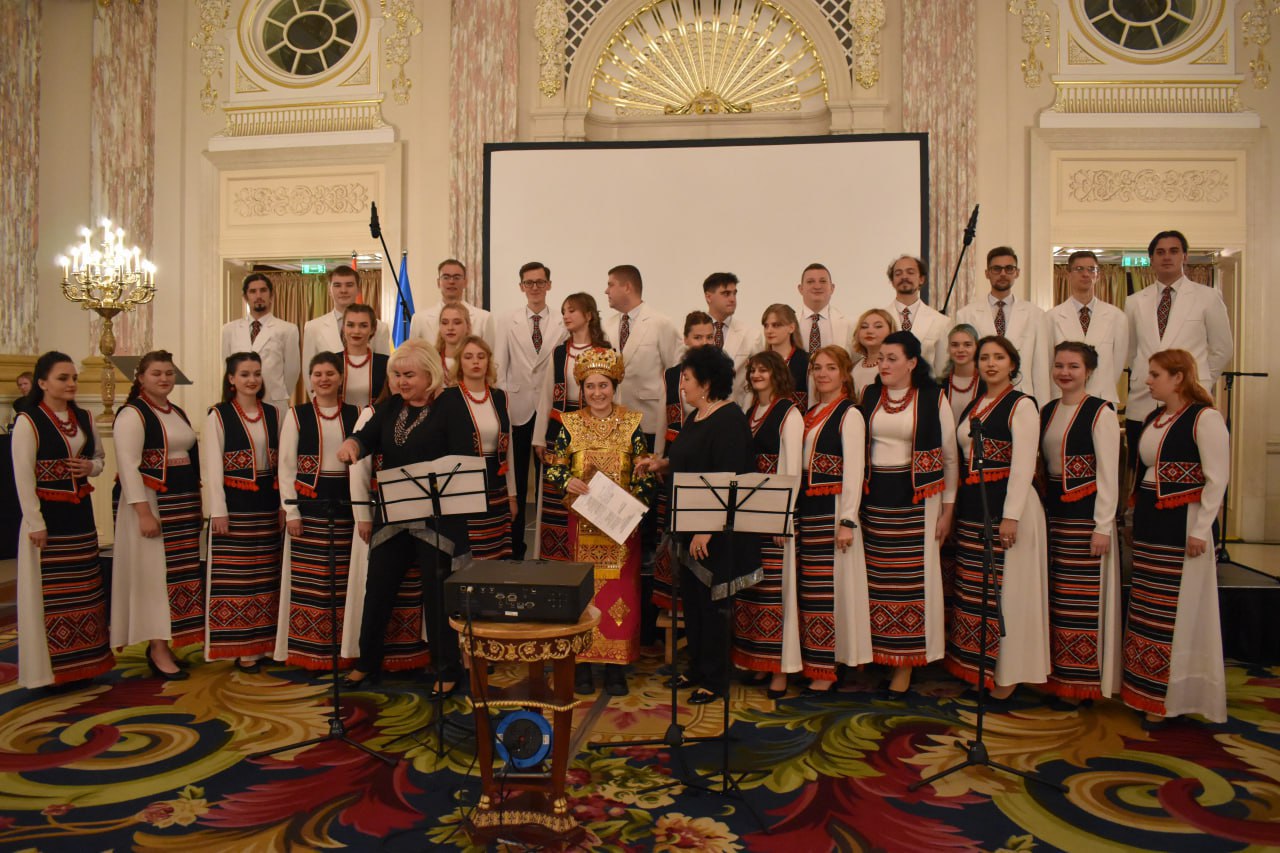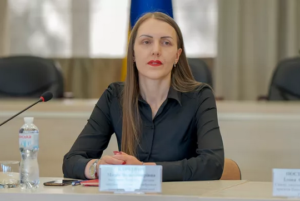
On October 17, 2024, a solemn diplomatic reception was held in Kyiv, organized by the Embassy of the Republic of Indonesia in Ukraine on the occasion of the 79th anniversary of the country’s independence. The event was attended by numerous diplomats, government officials and distinguished guests, including Deputy Minister for Foreign Affairs of Ukraine Yevhen Perebyinis.
In his speech, the Ambassador of Indonesia to Ukraine, Mr. Arief Muhammad Basalamah, thanked the Ukrainian partners for their support and expressed his deep conviction in the importance of further development of bilateral relations between the two countries.
“We deeply value our friendship with Ukraine, which has been developing for over three decades. The importance of our diplomatic ties is emphasized by the growth of bilateral trade, which reached 443.2 million US dollars in the first eight months of 2024,” the ambassador said.
He also emphasized the symbolic significance of celebrating Indonesia’s Independence Day in Kyiv, which underscores our common commitment to freedom and peace. According to the Ambassador, the Republic of Indonesia, which unites more than 17 thousand islands, is an example of unity in diversity, which resonates with Ukrainian values.
The Ambassador paid special attention to the achievements of Indonesia under President Joko Widodo, emphasizing infrastructure reforms and economic achievements of the country.
“President Widodo has begun the transformation of Indonesia, in particular through large-scale infrastructure projects, including the construction of new roads, bridges, and airports. These efforts ensure the long-term development of our economy and facilitate its integration into global markets,” he emphasized.

Mr. Basalama also focused on the country’s digital transformation strategy: According to him, Indonesia’s digital economy is developing rapidly, opening up new opportunities for innovation and entrepreneurship. The country is committed to building a knowledge economy that will allow our nation to remain competitive in the global world.
The ambassador also touched upon the issue of the new capital of Indonesia – Ibu Kota Nusantara (IKN), which is being built in the province of East Kalimantan. The IKN project is a response to the challenges of the future. The new capital symbolizes the Indonesian people’s desire for sustainable development and decentralization, and will become a model of a “green city” based on the principles of sustainable development.
In addition to economic and infrastructure projects, the ambassador noted cultural and educational initiatives that deepen ties between the two countries. He emphasized the importance of cooperation in education and culture.
“Our exhibition “Indonesia through the Lens” in Lviv and Ukrainian universities, as well as the signing of a memorandum of cooperation between universities, testify to our common goal of strengthening mutual understanding between our peoples,” Arif Muhammad Basalama emphasized.
Indonesia recognized Ukraine’s independence on December 28, 1991, and diplomatic relations between Ukraine and Indonesia were established on June 11, 1992.
Arif Muhammad Basalama, Embassy of Indonesia, INDONESIA, UKRAINE

Ukraine defeated Georgia 1-0 and secured their first win in the Nations League soccer draw, Suspilnoe Sport reported on Friday night.
Despite the first victory, Ukraine continues to go in last place in the Nations League group, behind Albania in head-to-head meetings: 1. Georgia – 6 points (3 matches), 5:2 (goal difference); 2. Czech Republic – 6 points (3), 6:6; 3. Albania – 3 (3), 2:4; 4. Ukraine – 3 (3), 4:5.
It is reported that the next match Ukraine will play against the Czech Republic on Monday, October 14.

Turkey has allocated Ukraine the last package of 1 thousand licenses for transportation to / from third countries in accordance with the agreement reached at the end of 2023, said the Deputy Minister of development of communities, territories and infrastructure Sergiy Derkach.
“Plus 1 thousand permits from Turkey for transportation to/from third countries. Ukrainian carriers can continue to perform transportation to / from third countries with Turkey. The corresponding forms of permits are already in “Ukrtransbezpek” and are available for ordering,” Derkach wrote on Facebook on Wednesday.
According to him, the permits were issued in accordance with the agreement that was reached at the end of 2023, which will allow to close the need before the end of the year.”
“I will remind you that earlier this year, for the first time since 2018, we managed to agree with Turkey to increase the number of such permits by 40% – up to 3,500,” Derkach wrote, indicating that the market has already used 2,500 permits.
The Deputy Minister recalled that bilateral and transit traffic between Ukraine and Turkey do not require permits, as freight traffic between the countries is liberalized. “Visa-free” will be valid at least until the end of martial law.

Croatian Prime Minister Andrej Plenkovic, during the opening of the Ukraine-Southeast Europe summit in Dubrovnik, assured continued support for Ukraine, which is suffering from Russian aggression.
“Today I want to focus on three points. The first is Croatia’s continued assistance to Ukraine, the second is the relations of Southeast European countries with Ukraine, and the third is why Ukraine, which is suffering from Russian aggression, matters to the world and how we behave in the international community,” he said during his opening remarks at the Ukraine – Southeast Europe summit in Dubrovnik on Wednesday.
Prime Minister pointed out that the total amount of aid to Croatia since February 2022 amounted to about 300 million euros. In addition, Croatia has received about 30 thousand Ukrainian refugees, as well as Ukrainian wounded soldiers, who are being rehabilitated in centers for veterans and specialized hospitals.
“In this context, President Zelenski and I signed an agreement on long-term cooperation and support between Croatia and Ukraine, which lays the foundation for our relations for many years to come, and its content is in line with what we believe we can best contribute,” Plenkovic emphasized.
According to him, “it is a natural reflex of Croatia, as a country that in the past survived aggression and war with much less international assistance, to stand today next to a country that defends the same values of freedom, democracy and peace.”
“We believe this is the right thing to do, and I am proud that today we are all gathered to reaffirm our joint support for Ukraine,” Plenkovic said.
The prime minister noted that Ukraine supported Croatia in 1991, becoming one of the first countries to recognize Croatia internationally, its independence, and provided the country with military equipment and weapons.
“Today Croatia supports Ukraine with equal strength and assistance,” Plenkovic emphasized.

Ukraine has launched an electronic system of accounting for the turnover of medical cannabis, the first pharmacy has applied for registration in it, said the Deputy Minister of Health for the development of digital transformation and digitalization.
“On Tuesday, this electronic system started working. We already have the first registration: a pharmacy from Cherkassy has already registered in the system. I hope more pharmacies will join,” she said at a press conference on Wednesday.
Karchevich specified that the sale of medkanabis drugs is carried out exclusively on the basis of an electronic prescription, so technical solutions have been developed to be able to prescribe and omit them.
In addition, the deputy minister recalled that the regulatory framework provides for the sale of both ready-made mednacabis preparations and preparations made in pharmacies from ready-made plant substances.
“In order to make it possible to manufacture these drugs in pharmacies, the requirements for the import of plant substances of cannabis have been determined,” she added.
Karchevych also noted that the registration of such substance can be carried out under a shortened procedure.

Due to technical reasons, the border crossing operations at the Palanca-Mayaky-Udobne checkpoint have been temporarily suspended, the State Customs Service of Ukraine reports.
The resumption of operations will be announced later.
Traffic on the transit section of the Odesa-Reni highway is carried out in the normal mode.
Palanka-Mayaky-Udobne checkpoint, STATE CUSTOMS SERVICE, UKRAINE